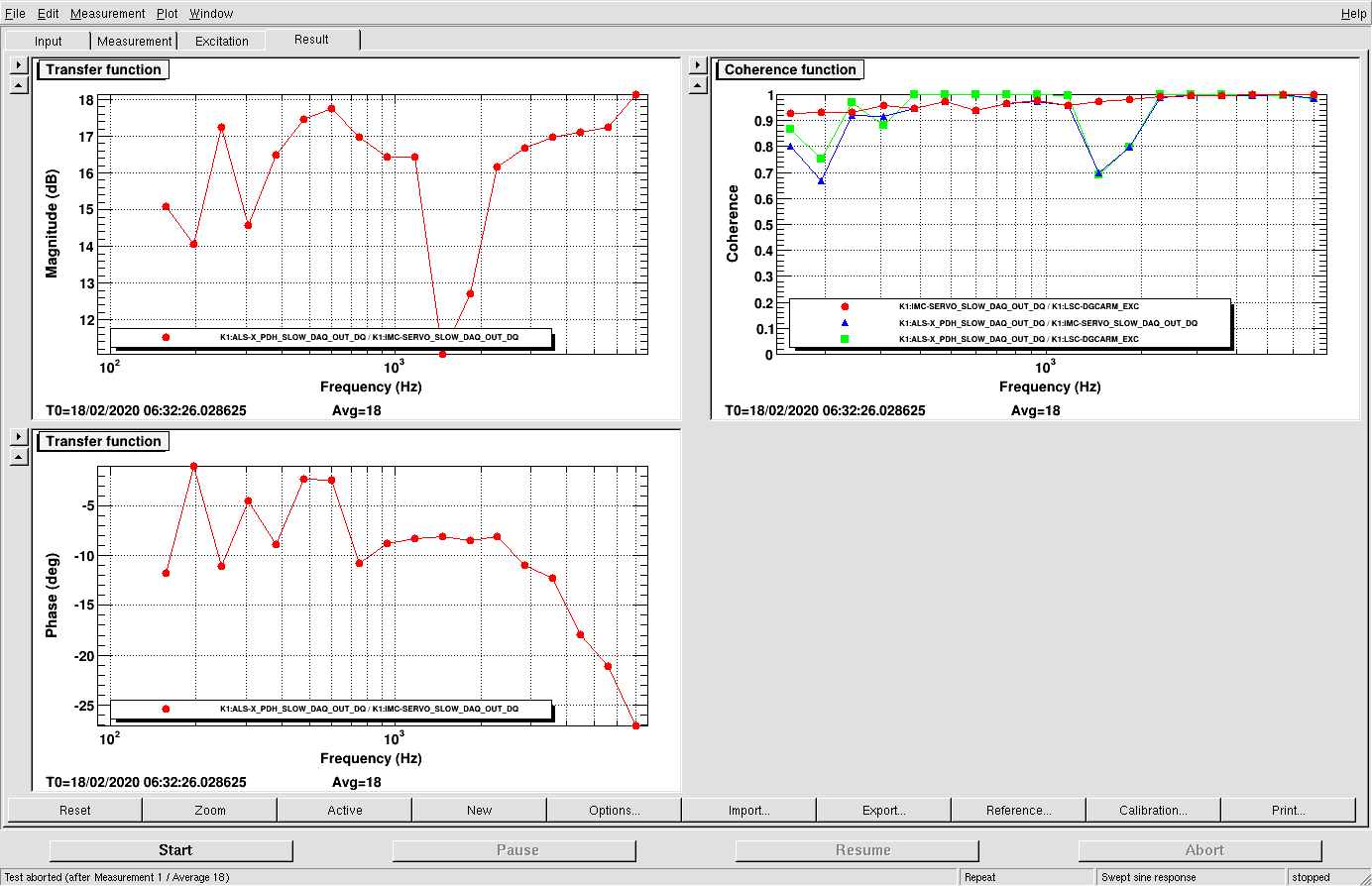[Kokeyama, Aso]
We measured the calibration factor for the laser PZT actuation in Hz/V.
Bottom line
The actuation efficiency of the laser PZT is 3 [MHz/V]
Method
- Lock ALS-X
-
Inject an excitation signal from DGCARM_EXC
- DGCARM is connected to the EXC-A of the summing CMB
- The slow output of the summing CMB is connected to INPUT2 of the CARM CMB
- Fast out of the CARM CMB is connected to INPUT2 of the MC CMB
- The excitation signal is injected into the MC error point through the above path
-
Using the above mentioned excitation path, measure the transfer function from "the signal going to the laser PZT" to "the signal going to the ALS-X AOM driver".
- More specifically, K1:ALS-X_PDH_SLOW_DAQ_OUT_DQ/K1:IMC-SERVO_SLOW_DAQ_OUT_DQ was measured.
- Laser PZT will change the IR frequency, which is copied to green with the ALS PLL. The ALS-X PDH servo tries to cancel this frequency change with the AOM.
- Since the AOM driver input is calibrated as 0.42MHz/V, we can calibrate the PZT actuation efficiency C in [MHz/V] with the following formula:
- C [MHz/V] = (AOM Driver efficiency [MHz/V])*(AOM Driver Input [V])/(Laser PZT Input [V])
Result
The transfer function from PZT to AOM was 16dB ~ 17dB around 1kHz.
The PZT calibration factor is:
C [MHz/V] = 0.42 [MHz/V] * 10^(17/20) = 3 [MHz/V]
Below is the measured transfer function. Between 1.2kHz to 2.2kHz, the coherence is bad, probably because of a noise glitch during the measurement.
Increase of the gain at high frequencies may come from the bandwidth limit of the ALS-X PDH loop.
At low frequencies, the measurement is not good because of the large suppression of the excitation signal by the MC servo.
Also around 100Hz, the MCL path will take over the PZT path. So the measurement is not clean.
We only look at the measurement points where the coherence is good to infer the PZT to AOM transfer function.
We injected 800cnts into the DGCARM excitation.

